Strength training isn’t just for athletes or gym regulars. It’s for anyone who wants to feel stronger, move better, and build lasting confidence. The right approach can transform how you look, think, and live. This guide shows you how to train smart, stay consistent, and achieve real results, whether you’re just starting out or aiming to take your training to the next level.
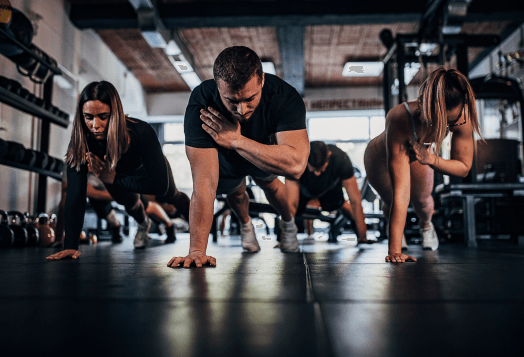
Why Strength Training Matters
Strength training is about moving with purpose, building resilience, and enhancing your quality of life. From carrying your groceries without strain to boosting your mood after a long day, the benefits stretch far beyond aesthetics.
Health and Functional Benefits
Strength exercises improve posture, joint stability, and balance, all of which protect you from injury and make daily life smoother. Imagine being able to climb stairs effortlessly, maintain energy through long workdays, or carry heavy bags without wincing. These are the results of consistent resistance training. A stronger body equals a more functional one.
Muscle Growth and Fat Loss
If your goal is muscle building or fat reduction, then this training should be your cornerstone. By progressively overloading muscles and gradually increasing weight, reps, or intensity, you stimulate growth and improve metabolism. The beauty is that strength training exercises continue to burn calories long after you finish, thanks to the “afterburn effect”. In other words, does strength training burn fat? You bet it does. It’s one of the most efficient ways to reshape your body composition.
Mental Health Benefits
The benefits aren’t just physical. Regular training is a proven stress-buster, helping regulate cortisol levels and releasing endorphins that lift your mood. It sharpens focus, improves memory, and builds confidence as you achieve new milestones. It's therapy for both muscles and the mind.
Types of Strength Training Exercises
Strength training works best when you train different areas of the body in a balanced way. Here’s how each group of exercises contributes to your overall strength.
1. Upper-Body Exercises
Building a strong upper body helps with daily tasks like carrying bags, lifting objects, or even sitting upright with good posture.
Push-ups: A simple move that strengthens the chest, shoulders, and triceps while also engaging the core, included among the best weight lifting exercises for strength.
Pull-ups: Excellent for developing the back and biceps while improving grip strength.
Bench press: A classic barbell or dumbbell exercise that builds pressing power in the chest and shoulders.
Rows: Train the upper back and reinforce posture, especially if you spend long hours sitting.
Shoulder presses: Develop strength in the shoulders and arms, which helps with lifting and overhead movements.
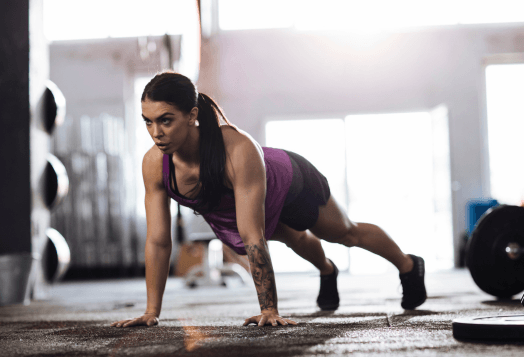
2. Lower-Body Exercises
Your legs and glutes provide the foundation for strength. They support movement, stability, and athletic performance.
Squats: A full-leg exercise that works the quads, hamstrings, glutes, and even your core.
Lunges: Great for balance and unilateral strength, targeting each leg individually.
Deadlifts: A powerful lift that strengthens the back, glutes, and hamstrings, while also training grip and posture.
Leg press: A machine-based movement that builds lower-body strength without requiring as much balance as free weights.
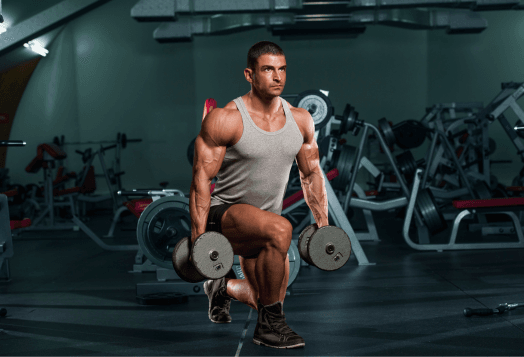
3. Core Exercises
Your core muscles stabilise the body and protect the spine. Training them improves balance and strength for every other lift.
Planks: Build endurance in the entire core while also improving stability.
Crunches: Target the abdominal muscles for strength and definition.
Russian twists: Strengthen the obliques and improve rotational control.
Leg raises: Train the lower abdominals and hip flexors for a complete core workout.
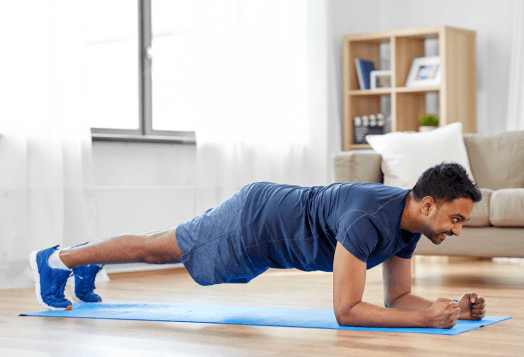
4. Full-Body Strength Training
Some movements target multiple muscles at once, giving you efficiency and functional strength.
Squat with press: Combines leg and shoulder training in one fluid movement.
Deadlifts: Engage the entire posterior chain, from legs to back, while improving grip.
Push-ups: A simple bodyweight exercise that works the chest, shoulders, triceps, and core all together.
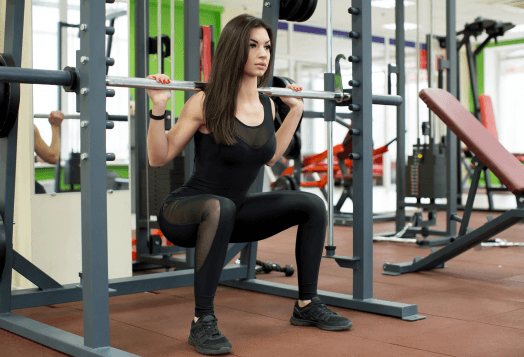
Strength Training Exercises at Home
Not everyone has access to a gym, and sometimes the best workouts happen right in your living room. Training at home removes excuses, keeps routines flexible, and proves that you don’t need expensive machines to get results.
1. Bodyweight Exercises
Your body is your first piece of equipment, and it’s surprisingly powerful. Squats train the legs and glutes, making daily movements like climbing stairs or getting up from a chair feel effortless. Push-ups work the chest, shoulders, and triceps while also engaging the core for stability. These bodyweight drills are easy to scale: start with basic versions and increase difficulty by adjusting angles, extending the time, or adding repetitions. For beginners, this is often the best way to understand what strength training feels like.
2. Resistance Bands and Dumbbells
Once you’ve mastered bodyweight training, resistance bands and dumbbells offer the next step. Bands create tension in both directions, which challenges your muscles differently from free weights. Dumbbells bring versatility to your routine, allowing you to isolate muscles or perform compound lifts like dumbbell squats and shoulder presses with guidance from personal trainers. Both tools are small enough to store under a bed but powerful enough to provide progressive overload, which is the key principle behind strength training exercises at home.
3. Kettlebell and Functional Training
If you’re ready to bring energy and flow into your workouts, kettlebells are a fantastic option. A simple kettlebell press challenges shoulders, arms, and grip strength, giving you both muscle and endurance gains. What makes kettlebells stand out is their ability to mimic real-life activities like lifting, carrying, and twisting, making this style of training highly functional. It’s especially useful if your goal is not only building muscle but also moving better in daily life.
Getting Started with Strength Training
Starting something new can feel daunting, especially when it involves weights, equipment, or movements you’ve never tried before. The good news is that strength training doesn’t demand perfection on day one. What matters is setting a solid foundation, moving with control, and creating habits that will keep you consistent.
1. Assess Your Fitness Level
Before diving into squats, deadlifts, or bench presses, take stock of where you are right now. If you’re new, begin with bodyweight exercises to learn how your muscles move without heavy loads. For those who’ve been active in other forms of exercise, such as running, cycling, or yoga, start with light dumbbells or resistance bands to complement your choice of strength, cardio, or HIIT training styles. This approach highlights areas that may be strong already and others that need attention, such as core stability or mobility.
2. Set Goals and Track Progress
This type of training works best when you know what you’re aiming for. Do you want to increase muscle size, lose fat, improve daily strength, or support another sport you love? Once you decide, write it down. Goals give direction and clarity.
Tracking is the second part of the puzzle. Use a notebook, an app, or even the notes on your phone to log sets, reps, and weights lifted. Small, measurable progress keeps motivation alive and gives you proof that your efforts are paying off. Over time, you’ll look back and see how those tiny improvements built the stronger, fitter body you wanted.
3. Frequency and Recovery
The excitement of starting something new can tempt you to train every day. Resist that urge. Muscles don’t grow during the workout, they grow while you rest. For beginners, two or three sessions a week is the sweet spot. This allows time for recovery while still giving your body enough stimulation to adapt and improve.
Adequate sleep and balanced nutrition are equally important. Without them, progress slows and fatigue creeps in. Think of recovery as part of the training plan, not an afterthought.
Your Journey to Strength
Strength training is a journey of building resilience, inside and out. Whether you’re sweating it out with dumbbell exercises or pushing your limits with full-body strength training, every rep adds up to progress.
Consistency is the real magic. Stick with it, challenge yourself gradually, and celebrate each step forward. Stronger muscles, sharper focus, and a healthier body await. And remember: this isn’t just about training your body, it’s about empowering your life.




